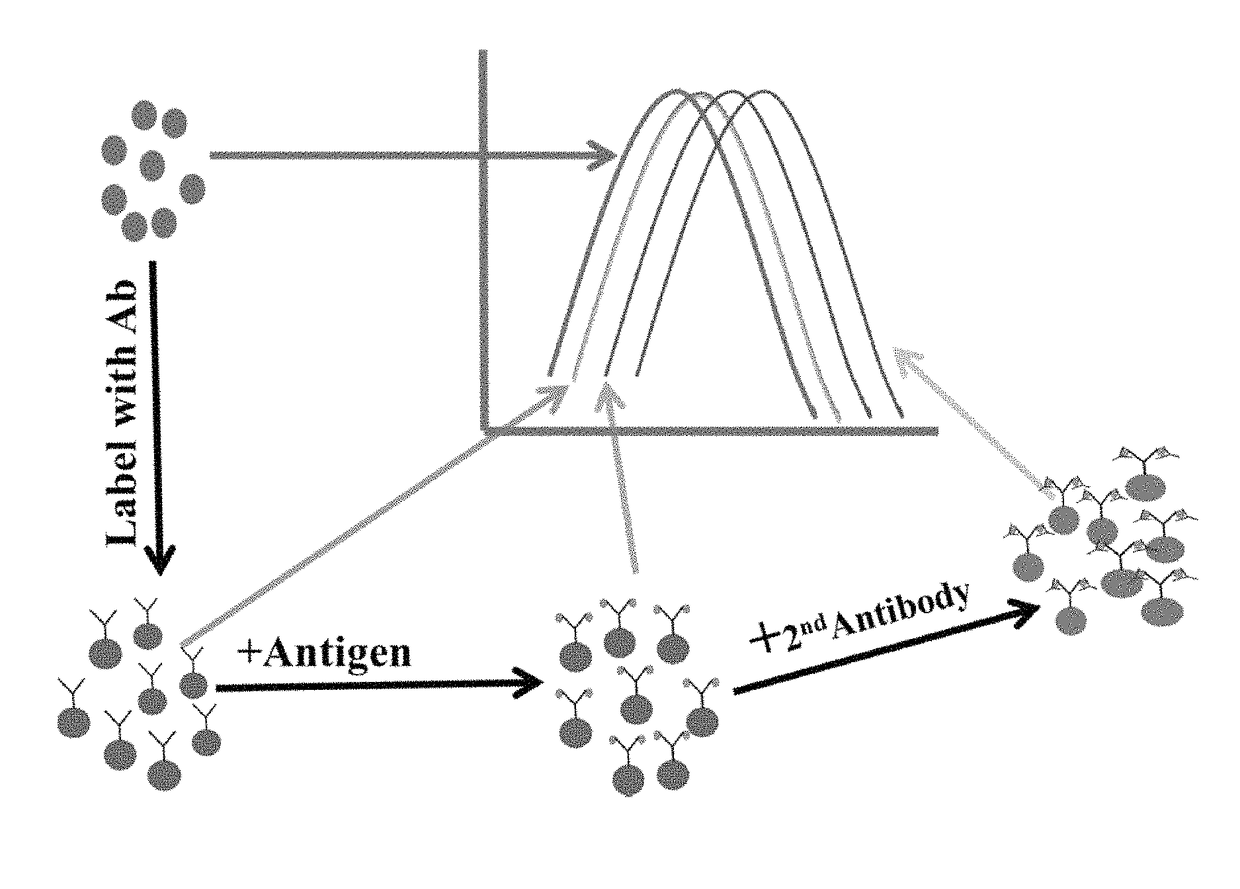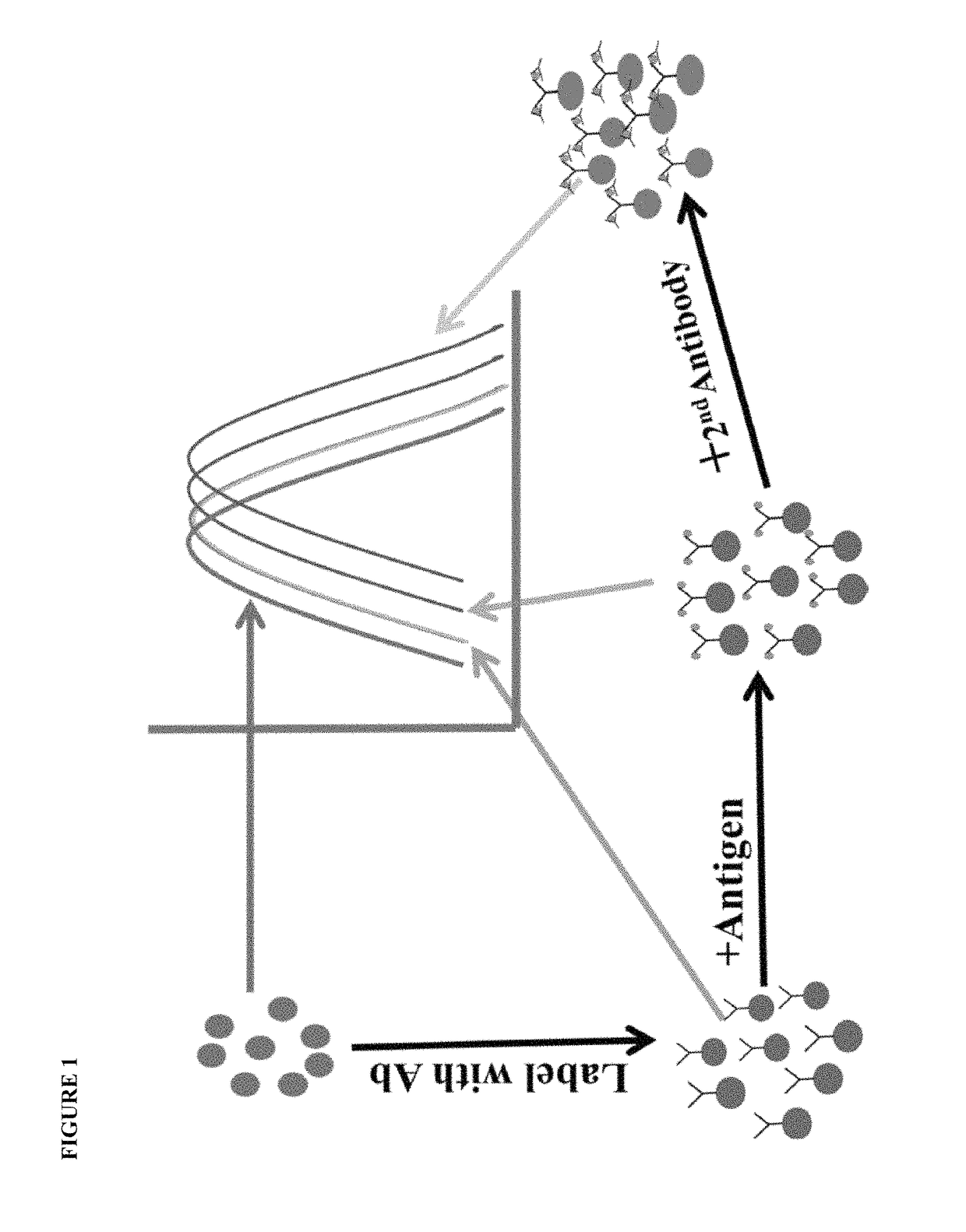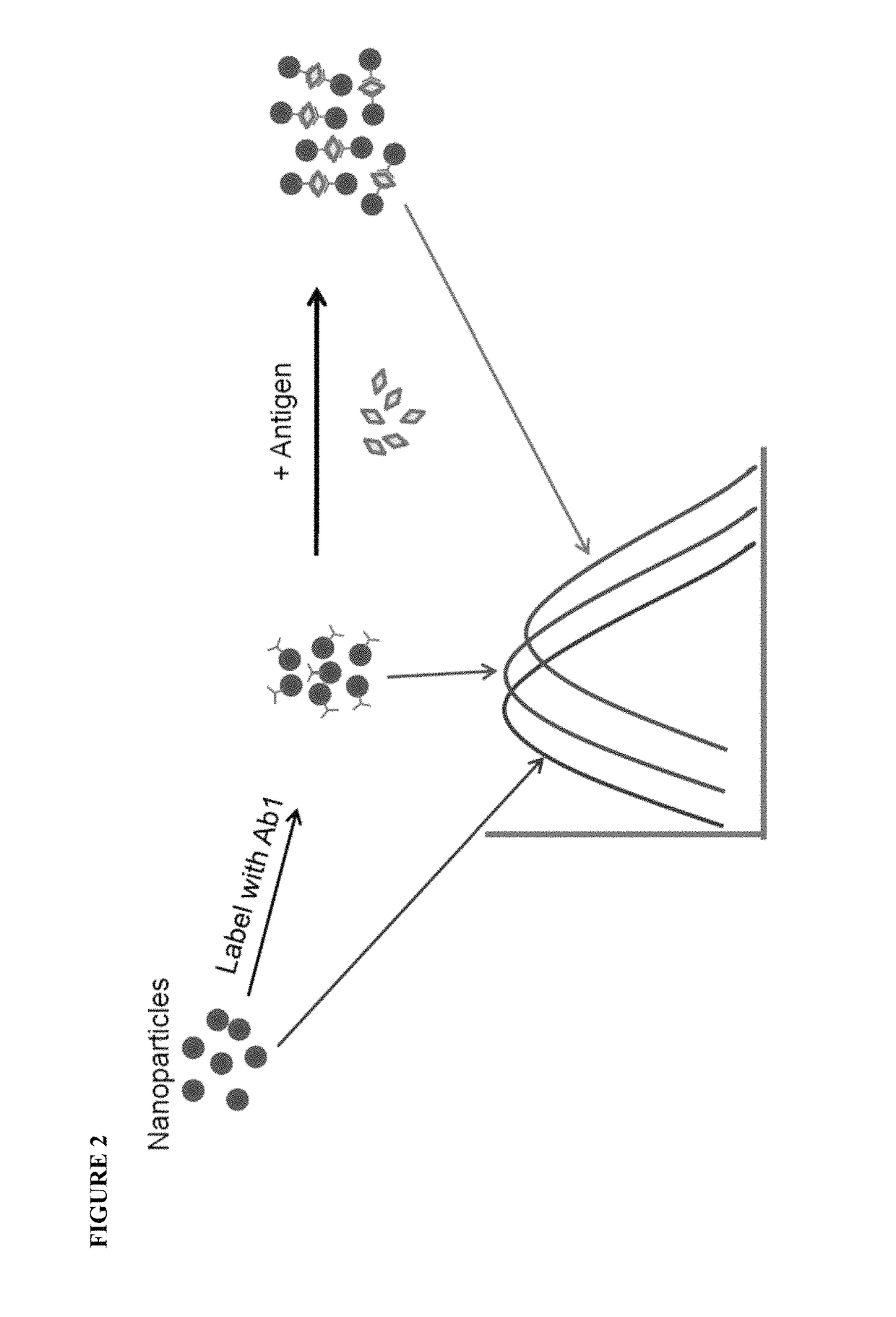Signal amplification in solution-based plasmonic specific-binding partner assays
a specific-binding partner and signal amplification technology, applied in the field of localized plasmon resonance-based analyte detection system, can solve the problems of low sensitivity of assays, inability to quantitatively monitor the kinetics of sequential binding events, and inability to achieve quantitative monitoring of sequential binding events. , to achieve the effect of improving the sensitivity of the assay
- Summary
- Abstract
- Description
- Claims
- Application Information
AI Technical Summary
Benefits of technology
Problems solved by technology
Method used
Image
Examples
example 1
say Utilizing Amplification of LSPR Signals
[0098]In this example, a blank reaction is setup by adding a solution containing colloidal conjugate of anti-heartworm polyclonal antibody, a suitable dispersing medium such as phosphate buffered saline, and a sample devoid of heartworm antigen. The spectral changes are recorded over a period of time. A set of positive controls is then setup by adding known quantities of heartworm antigen to the reaction solutions used in the blank solution above. Alternatively, a blank reaction is recorded and then known quantities of heartworm antigen are added to prepare a calibration curve correlating shift in spectral scan with concentrations of antigen. This calibration curve is then used to calculate the quantity of heartworm antigen in an unknown sample. The shift in spectral scan means (i) a change in λmax, (2) difference spectrum between positive and negative samples, or (3) derivative spectra.
example 2
Assay Utilizing Amplification of LSPR Signals
[0099]Sandwich assays are most suitable where an analyte displays at least two distinct binding sites (epitopes of an antigen) with each site binding to a specific binding partner. Thus, in this example, an antibody directed towards one epitope of CRP is immobilized on the gold and / or silver nanoparticles and the second antibody directed towards a non-overlapping epitope is labeled with colloidal gold and / or silver. This setup allows measurement of the CRP antigen as the amount of CRP antigen in the sample determines the extent of spectral change. The spectral change is also seen when the second antibody is not labeled but the change is several orders of magnitude lower. The metallic composition of the nanoparticles may be changed to optimize the reaction conditions.
example 3
g Assays in a Rotor
[0100]Direct competitive assays or sandwich assays may be performed in a centrifugal rotor, such as a rotor described in U.S. Pat. Nos. 5,061,381, 5,122,284, 5,186,844, 5,304,348, 5,457,053, and 5,693,233. In this case, the nanoparticle conjugates of the two pairing monoclonal antibodies or a polyclonal antibody mixture that binds to more than one epitope are added as lyophilized beads. The solution phase LSPR assay works both with monoclonal and polyclonal antibodies.
PUM
| Property | Measurement | Unit |
|---|---|---|
| diameter | aaaaa | aaaaa |
| diameter | aaaaa | aaaaa |
| diameter | aaaaa | aaaaa |
Abstract
Description
Claims
Application Information
 Login to View More
Login to View More - R&D
- Intellectual Property
- Life Sciences
- Materials
- Tech Scout
- Unparalleled Data Quality
- Higher Quality Content
- 60% Fewer Hallucinations
Browse by: Latest US Patents, China's latest patents, Technical Efficacy Thesaurus, Application Domain, Technology Topic, Popular Technical Reports.
© 2025 PatSnap. All rights reserved.Legal|Privacy policy|Modern Slavery Act Transparency Statement|Sitemap|About US| Contact US: help@patsnap.com



